Innovative Water Conditioning Solutions
Eco-friendly technology preventing scale and biofilm buildup.
Advanced Technology
Harnessing patented hydropath technology for cleaner water.
Environmentally Friendly Solutions for Your Plumbing.
Prevent Scale and Biofilm Accumulation Effectively.
Global Distribution
Trusted for Over 20 Years
Hydroflow
Marine Water Conditioner
The Hydropath Marine (HM) range is specifically designed for operation on marine vessels. It provides water treatment benefits, including scale protection and biofouling control, in both fresh and sea water.
Designed for ease of installation, the device is simply assembled around the pipe and connected to an 87-240V AC 47-63 Hz power source. Standard sized units fit pipes ranging from 25mm (1”) to 200mm (7 ⅞”) maximum outer
diameter. For larger pipe sizes, devices can be customized to fit specific requirements.
This durable water conditioner is fully encapsulated and waterproof, with an IP rating of 68 and incorporates a specially-designed surge protector.
Key Benefits:
Prevents the buildup of mineral deposits in the vessels water systems.
Causes biofilm to detach and flush out of the system.
Decreases the risk of waterborne pathogenic contamination.
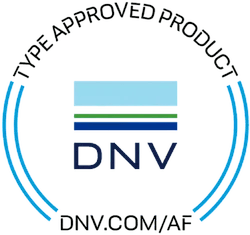

Innovative Water Treatment Solutions
Hydroflow Northwest provides cutting-edge water conditioners that utilize patented Hydropath technology. This technology prevents scale and biofilm, ensures clean plumbing systems, and supports environmental sustainability, backed by our parent company, Hydroflow USA, for more than 20 years.
Our Commitment to Innovation
Hydroflow Agriculture
Access to nutritious food, alongside clean water, is a foundational concern for people worldwide, positioning agricultural advancements as a global priority.
The United States stands as the leading producer and exporter of agricultural goods globally. Over the years, this vital industry has transformed to become more resource-efficient, with farms and food processing facilities actively seeking methods to enhance efficiency through optimized processes.
The innovative HydroFLOW device provides environmentally friendly and economically viable solutions, which include: improved crop yields, enhanced water quality, decreased water consumption, lower chemical usage, and minimized equipment upkeep.
HydroFLOW is recognized by the United States Department of Agriculture as an Organic Crop Production Aid, applicable for both irrigation and food processing applications. By incorporating HydroFLOW into their operations, businesses in farming and food processing can expect a rapid return on their investment.
Hydroflow Residential
Residential properties in areas with hard water experience buildup of scale on shower heads, pipes, and appliances, leading to expensive repairs, replacements, and maintenance costs.
Additionally, homes featuring pools or spas must utilize expensive and unhealthy chemicals to ensure proper operation. These issues are not just inconveniences; they can be financially burdensome for homeowners and potentially decrease property value.
Advantages of a HydroFLOW water conditioner:
Simple to install
No maintenance required
Offers complete home protection
Prolongs appliance lifespan
Doesn't occupy valuable space
Assists in lowering energy use
Costs about $5 annually to run
Recovers its cost in under a year
More affordable than a water softener
Environmentally conscious and free of chemicals
Hydroflow Industrial
For over a century, the U.S. has been in the forefront of industrial innovations that shape the world. As industry evolves, so do equipment maintenance practices. Chiller plants are critical to the operation of most industrial facilities, which forces maintenance managers to constantly look for system optimization techniques.
Most treatment methods rely heavily on a costly chemical regiment, that in many cases, doesn’t achieve the desired results, causes efficiency loss and premature equipment failure. To make things more challenging, facilities are mandated to significantly decrease their chemical usage and carbon footprint by implementing stringent environmental sustainability programs.
The innovative HydroFLOW water treatment device, offers a state-of-the-art solution that helps facilities optimize their processes, while realizing a quick return on investment. Facilities that integrate HydroFLOW, greatly improve their production capacity while contributing to a cleaner and healthier environment.
Hydroflow Commercial
Chemical-Free Bacteria Neutralization
Produced and flowback water have increasingly become a vital element of the hydraulic-fracturing process, shifting away from being a costly waste that requires transportation and disposal. Water management practices have seen significant improvements across all aspects of the oilfield water cycle, with new efficiencies enhancing safety, economic viability, and reliability. Bacterial fouling poses a prevalent issue in both water storage and usage during hydraulic fracturing operations, and traditional prevention and treatment methods often incur substantial costs without real-time validation of their effectiveness. Recent advancements enable chemical-free neutralization of bacteria, in addition to on-site bacteria testing. This greatly enhances the management of bacterial contamination while lowering operational costs.
What is Flowback and Produced Water?
Flowback and produced water are normally anaerobic with <2 parts per million (ppm) of dissolved oxygen (O2). They frequently contain a wide range of bacteria that include sulfate-reducing bacteria (SRB) and acid-producing bacteria (APB). These waters also have free iron and other nutrients to allow the bacterial colonies to multiply rapidly in the anaerobic environment.
During pumping and water-handling operations, enough oxygen is introduced to change the environment to an aerobic condition so that aerobic bacteria can grow and proliferate rapidly. While not enough dissolved oxygen is added to kill anaerobic bacteria, their growth is retarded in this state. If allowed to return to a deeper low-oxygen zone, these anaerobic bacteria multiply aggressively. They form colonies that produce high-molecular-weight polysaccharides, which deposit on piping, proppant and other geologic formation surfaces as a biofilm. This serves as the glue that holds the microbial colonies to metal or rock surfaces. Given the right conditions downhole, these microbes continue to expand in numbers, deeper into the geology. This causes “souring” of the well by production of hydrogen sulfide.
The impact of Microbiology Influenced Corrosion (MIC)
Microbiologically influenced corrosion (MIC) on the steel-production tubing and well-casing materials, plugs the pores and permeable seams in the rock. This decreases production and requires capital-intensive repairs. MIC is estimated to cost the oil and gas industry billions of dollars each year because of the capital costs in replacing and repairing pipelines and equipment. Added to that are the revenue losses from lost production.
Flowback and Produced Water
Flowback and produced water are normally anaerobic with <2 parts per million (ppm) of dissolved oxygen (O2). They frequently contain a wide range of bacteria that include sulfate-reducing bacteria (SRB) and acid-producing bacteria (APB). These waters also have free iron and other nutrients to allow the bacterial colonies to multiply rapidly in the anaerobic environment.
During pumping and water-handling operations, enough oxygen is introduced to change the environment to an aerobic condition so that aerobic bacteria can grow and proliferate rapidly. While not enough dissolved oxygen is added to kill anaerobic bacteria, their growth is retarded in this state. If allowed to return to a deeper low-oxygen zone, these anaerobic bacteria multiply aggressively. They form colonies that produce high-molecular-weight polysaccharides, which deposit on piping, proppant and other geologic formation surfaces as a biofilm. This serves as the glue that holds the microbial colonies to metal or rock surfaces. Given the right conditions downhole, these microbes continue to expand in numbers, deeper into the geology. This causes “souring” of the well by production of hydrogen sulfide.
How to Prevent Flowback
To prevent these bacteria from being introduced to new wells, several different types of water bacterial treatments have been developed. They have shown varying measures of effectiveness. Dosing with bactericides and oxidants (either chlorine dioxide or ozone) tends to reduce the number of living colonies temporarily, but unless residual treatment effectiveness is maintained to keep populations in check, they often do not successfully eliminate the biofilm that serves to protect the colonies. The tremendous growth rate of these organisms in hot, water-rich and low-oxygen subsurface conditions causes aerobic and anaerobic bacteria to thrive in the wellbore and formation, and microbe populations rebound within days.
A common challenge in the field is conducting reliable, “near real time” tests on the water to understand bacterial levels hour to hour. If this is available, then management of biocide dosing is possible, and confidence increases that bacteria are not present in the fluids going downhole. Current tools for verifying bacteria have been described in the National Association of Corrosion Engineers (NACE) TM0194-2014, Field Monitoring of Bacterial Growth in Oil and Gas Systems. They are useful for estimating sessile (those that “stick to” a surface) bacterial populations that are commonly found in oilfield systems. The guidance document identifies numerous testing approaches, though all require discrete samples taken in the field and then transported to a testing facility.
The most common approach for measuring bacteria for oil-and-gas water has been to focus on indicator bacterium types such as SRB and APB organisms using “bug” bottles. These rely on serial dilution and cultivation in nutrient media for relatively long periods, often up to 30 days. However, less than 10 percent of the viable microbes can be cultured using this approach, and there is a broad range of microorganisms found in oil-and-gas systems that might harm well integrity that are not identified. Further, the identification of colony counts is presented well after the decisions need to be made for water treatment. So, a significant gap in bacteria control historically exists.
Identifying specific groups of organisms, like microbial genera and species, provides the ability to apply biocides more targeted with greater effects and generally at lower costs prior to the frac. A qPCR can specifically test for sulfate-reducing bacteria. To comprehensively identify all bacteria present, a metagenomics test is needed. Known as the Well Characterization Test (WCT), it comprehensively identifies all bacteria by genera and species in a given fluid sample including SRB, APBs, IRBs and more. Pinpointing specific genus and species means biocides can be applied more narrowly with greater effectiveness and generally at lower costs prior to the frac.
How HydroFLOW Provides Bacteria Neutralization
The combination of Rapid-B bacteria testing and the HydroFLOW device provide a step change in oilfield-bacteria control. HydroFLOW water conditioners are environmentally friendly devices that have been distributed throughout the world for many years, but only recently entered the U.S. market. Over twenty years ago, Hydropath Holdings, located in the U.K., invented a process that treats fluids by inducing a robust yet harmless signal of 150kHz throughout plumbing systems made of any material. The pipe, and/or the fluid inside of it, acts as a conduit which allows the signal to propagate. The induction of the signal prevents scale and biofilm from accumulating inside plumbing systems and gradually removes existing deposits. This preventative action significantly reduces energy, chemical, water and maintenance costs which extends the service life of equipment and pipes.
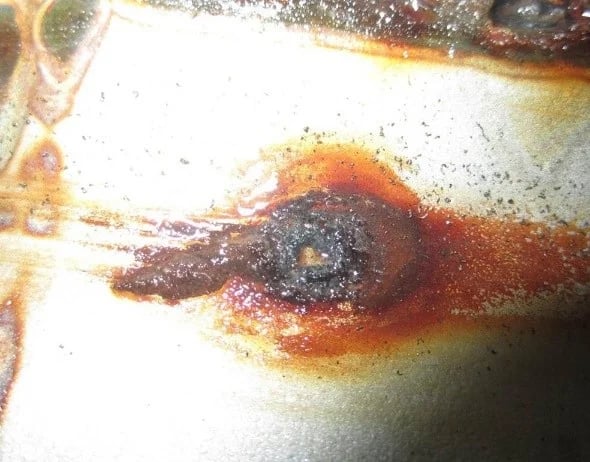

MIC Colony
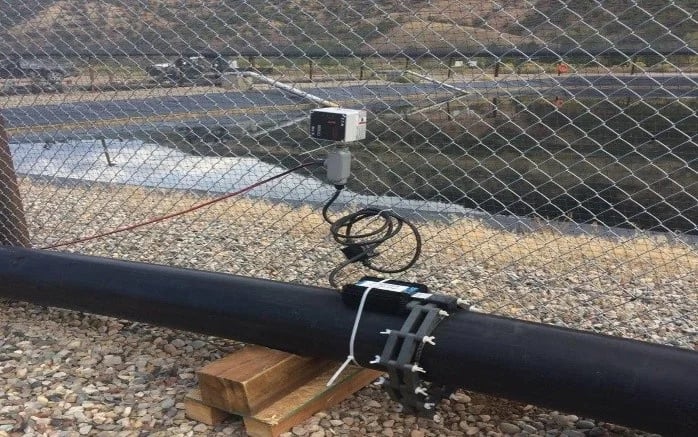

Installed HydroFLOW device
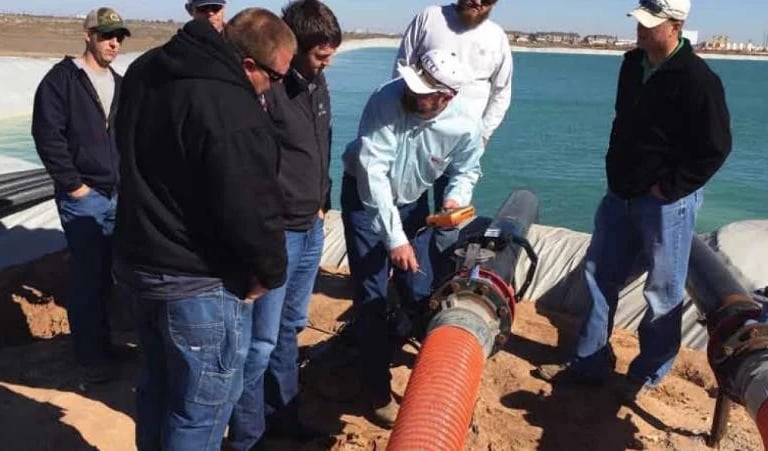

HydroFLOW device at a frac water pit
Photos and content courtesy of HydroFLOW USA
Water Conditioning Solutions
Eco-friendly devices using patented technology to prevent scale and biofilm in plumbing systems.
Scale Prevention System
Our technology prevents scale buildup and biofilm accumulation, ensuring efficient plumbing systems for your needs.
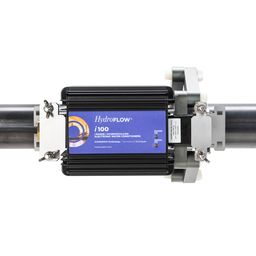

Biofilm Removal Service
Gradually removes existing deposits, enhancing the longevity and performance of your plumbing infrastructure.
Experience the benefits of our innovative technology for cleaner, healthier water systems in your home.
Innovative Water Solutions
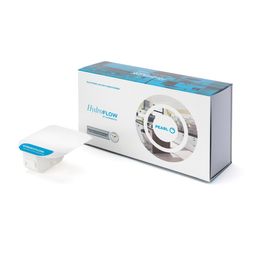

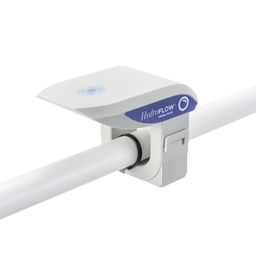

Hydropath Industrial Technology
Innovative water conditioners preventing scale and biofilm in plumbing.

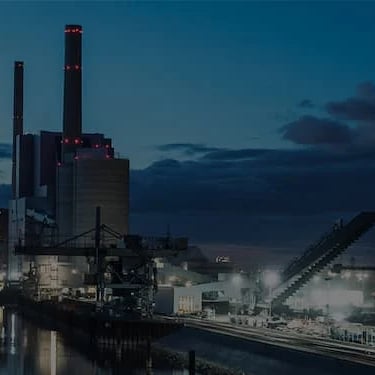
The HydroFLOW i Range water conditioner offers a solution that is free from chemicals to counteract the detrimental effects of scale, corrosion, bacteria, and algae within the industrial, commercial, and agricultural sectors. Additionally, this device enhances filtration efficiency through flocculation. This robust water conditioner is fully encapsulated and waterproof, exhibiting an IP rating of 68 (NEMA 6P).
Engineered for simple installation, the device can easily be assembled around the pipe and connected to a power source with an AC voltage of 87-240V and 47-63 Hz frequency. Standard-sized units accommodate pipes with diameters ranging from 25mm (1”) to 200mm (7 ⅞”). For larger pipe sizes, the devices can be tailored to meet specific requirements.
The i Range water conditioner is the most sought-after range from HydroFLOW. Notable features include an integrated power supply within the transducer and a hardwired brass electrical connector, contributing to its exceptional durability.
Additional Benefits
Non-intrusive and straightforward to install—no plumbing changes necessary.
Transmits the Hydropath signal throughout the entire water system.
Offers around-the-clock protection.
Does not disrupt other electrical systems.
Specifications
Input Voltage 87-240V AC
Input Frequency 47-63 Hz
Water and Dust Protection
Built-in EMI Filter
The installation of this device does not substitute for regular preventive maintenance procedures for equipment.
Main Benefits
Dissolves and eliminates existing scale.
Prevents new scale build-up.
Deactivates bacteria and algae.
Prevents and removes biofoul.
Enhances filtration efficiency.
Significantly diminishes corrosion.
Financial and Environmental Benefits
Lowers energy use.
Boosts the efficiency of water heating apparatus and machinery.
Reduces or eliminates chemical reliance.
Lessens the necessity for chemical safety protocols, storage, and disposal.
Decreases maintenance expenses.
Typically, a payback period of one to two years.
Popular Applications
Cooling Towers.
Boilers.
Heat Exchangers.
Chillers.
Filtration Systems.
Dewatering Systems.
Irrigation Systems.
Power Generation.


Hydroflow water conditioners effectively eliminated scale in my plumbing. Highly recommend their innovative technology.
John D.


★★★★★
Technology
Innovative CHEMICAL FREE water conditioning solutions for your plumbing needs: Home, Commercial, Industrial.
sales@hydroflownw.com
509-410-3709
© 2025. All rights reserved.